- Home
- Tom Clancy
Armored Cav: A Guided Tour of an Armored Cavalry Regiment Page 7
Armored Cav: A Guided Tour of an Armored Cavalry Regiment Read online
Page 7
• The Position/Navigation (POS/NAV) Sensor Unit—This is an inertial guidance unit that accurately senses and maintains a record of where the M1A2 has been and gone. It feeds directly into the IVIS system to provide a ground truth of just where the M1A2 is located. It is accurate to within about 17 yards/17 meters for every 1,000 yards/ 1 kilometer traveled.
• The Turret Electronics Unit—This provides control and interfaces for all of the electronics in the M1A2’s turret. It acts as a switchboard for data flowing between systems such as the CITV, CID, and the Radio Interface Unit.
• The Radio Interface Unit (RIU)—This is the heart of the IVIS system. It is the information gateway between the M1A2 vehicle systems and the two onboard AN/VRC-92A SINCGARS secure VHF radios. The SINCGARS radios are extremely secure, combining encryption and frequency-hopping to defeat enemy eavesdropping. The RIU controls the radios and the nets they are hooked into, as well as distributing information to other IVIS-equipped vehicles and artillery/aircraft assets on the TACFIRE fire control network.
A view of an IVIS terminal “page” as seen by the commander of an M1A2 Abrams main battle tank. It shows a movement by four M1s (the four small circles on the left) moving towards an objective (called “OBJ DOG”) through a phase line (called “FOX”).
JACK RYAN ENTERPRISES, LTD., BY LAURA ALPHER
• The Hull Electronics Unit (HEU)—The HEU controls all of the electronics subsystems in the hull, everything from monitoring the fuel level to indicating whether or not the headlights are on.
• The Fire-Control Electronics Unit (FCEU)—The FCEU provides fire control for the M256 120mm main gun. This system monitors environmental conditions, gun tube temperature and wear, ammunition type and status, and a variety of other functions. It is designed to be able to control and fire the new generation of guided tank-gun ammunition (including anti-aircraft shells) that is coming on-line.
• The Digital Electronics Control Unit (DECU)—The DECU controls and monitors the AGT 1500 engine. It can assess the status of the engine and report this to the crew. In addition, like all the other vehicle systems, it can report this information over the IVIS system.
All of these subsystems are linked via a data highway or network. This data network (known officially as an MIL Standard 1553 data bus) allows each system to send information to the various displays around the tank. It is completely redundant, so that if the 1553 data bus cable should be cut at any point, the data flow is automatically routed around the break onto a second cable. Later versions of the M1A2/IVIS software may even be capable of ordering replacement parts, ammunition, oil, and fuel for a tank, and telling combat support units just when and where to deliver it! All without active intervention by the crew. Field evaluations of M1A2-equipped units at Fort Hood, Texas, and the National Training Center (NTC) at Fort Irwin, California, indicate that they will be from three to five times as lethal in combat as a similarly equipped unit of M1A1s.
All of this technology is quite exciting and sexy, but just how would an M1A2 use all of it to engage and destroy an enemy force? Consider a four-tank cavalry platoon of M1A2s moving to contact with an enemy force of tanks and infantry fighting vehicles.
Before they get started, the platoon commander sets up the map overlays on the CID MFD (Multi-Function Displays) in the command tank. The commander can use the existing database of map information, or input it himself. The route of march, expected contact points, obstacles, etc., can all be inputted onto these electronic maps, and even updated as the unit moves forward and observes changes in the tactical situation. After sending the maps/overlays to the other tanks in the platoon (as well as the company/troop commander) via the IVIS network, the unit mounts up and then forms up into the march formation (probably a box or wedge formation). Then the tanks rapidly move across the terrain. The drivers are guided by inputs from their DIDs, and even by on-the-fly cues fed through the IVIS system. Each tank commander sets up his CITV to scan a pre-selected sector of the area around the platoon. The loaders probably have an M830 High-Explosive Anti-Tank (HEAT) round loaded, since it has excellent effects against all kinds of targets. The gunners are meanwhile scanning through their thermal sights, watching for trouble. All without a word being spoken.
Let us assume that the platoon suddenly comes upon an enemy combined tank/mechanized infantry unit behind some hastily constructed obstacles (called “cheap tricks” by U.S. forces). As the gunner of the first tank to sight the enemy begins to use the laser range finder to sight on the lead enemy tank, the platoon commander sends a contact position report over the IVIS system to the rest of the platoon and to higher echelons. This states the composition and position (fed automatically from the laser range finder and POS/NAV system) of the enemy force. As the first HEAT rounds exit the gun tubes, the breeches of the M256 cannons open and eject the base cap of the expended round (the round case is consumed during firing). The gunner then yells over the intercom what kind of round—M830 HEAT or M829 APFSDS (called “sabot” by the crews)—he wants the loader to load in the gun next. The loader twists to his right, bangs his right knee against a switch which opens the armored blast door to the ready ammunition-storage compartment, and hefts a round of the proper type out.
Releasing the knee switch (the blast door closes quickly and automatically), he then slams the round into the breech with his right arm, gets his hand clear, and yells, “Up!” This is the signal to the gunner that the next round is ready to fire. While the loader has been doing this, the gunner has been selecting on the GCDP what kind of round is going to be fired and taking aim at the next target. After using the laser rangefinder to verify target range, the gunner yells, “On the way!” and depresses the triggers. The fire control takes information from the crosswind sensor, as well as the other M 1A2 systems, and makes minute corrections to the aim, or lay, of the gun tube. There is an incredible noise and blast as the round fires, and the breech/recoil system begins to dissipate the energy of the recoil. During this time, each member of the turret crew has to be careful to keep arms and legs safely away from 115 tons of gun recoil force that is slamming just inches away from them. This process will be repeated every three to five seconds in each tank, until the enemy unit is either in retreat or, more likely, completely destroyed with survivors surrendering.
While all this is going on, the tank commanders are using their CITVs to scan other sectors of the battlefield to see if other enemy forces are approaching from any other sector. Let us assume that the platoon commander spies such a unit (say enemy tanks attempting to hit the platoon’s flank) off to one side. Seeing the pending danger, the commander immediately centers up the lead enemy tank in his CITV viewer screen and hits the SLEW/SLAVE button on the middle of his hand controller. In less than two seconds (this is very fast), the turret has rotated, and the gun tube is centered on the new target. A flick of the thumb switch for the laser rangefinder, and the commander is ready to start the new engagement. Once he hears the loader’s “Up!” call on the intercom, he himself yells, “On the way!” And the first round is headed to the new targets. Total time from first sighting to the round flying is probably less than five seconds. As the gunner takes the cue to the new targets and begins to engage them on his own, the platoon commander will be using the position of the first enemy target tank to send a message over the IVIS system to let the other tanks in the platoon know what he has found. Using the thumb pointer/mouse, he pages down through the various message forms, finds the proper one, and sends out a message about the new threat. The rest of the unit’s M1A2s would join in as quickly as possible to deal with the second threat, while the platoon’s commander would probably be updating the map overlays (and sending the updates through the IVIS system) for the platoon and higher authority with the positions of the enemy force’s “cheap tricks (hasty obstacles),” so that the company /troop commander can send an engineering vehicle or M9 ACE to clear them. All without one word being spoken over the voice radio channels.
Whi
le all this has been happening, the drivers have continued to move forward towards the platoon’s objective, without disturbing the gunnery of the tanks one bit. Should the enemy bring down artillery fire, the platoon commander can quickly use the IVIS system to call for counter-battery fire or air strikes via the IVIS/TACFIRE interface. And because of the POS/NAV system’s inputs, the risk of accidentally calling down fire on a friendly unit and causing “fratricide” casualties is greatly reduced. Again, without a single voice message being sent. So rapid has been the destruction of the enemy units that they probably will not have had time to contact their superiors to report on the battle. Much as in Ridley Scott’s terrifying film Alien, the only notice that the enemy’s higher authorities may have that something has happened may be a scream on the communications circuits and then silence. Dead silence.
Once the enemy unit has been destroyed and the platoon’s objective taken, the platoon commander can use the IVIS system to request resupply, ask for another mission, or submit his after-action report. So powerful is a unit equipped with the M1A2/IVIS system, that missions that might normally be assigned to companies or battalions can now be assigned to platoon-sized teams, and carried out successfully. The downside to all this power and flexibility is that it is going to take a tank commander with exceptional situational awareness and brains to get the most out of the M1A2. But if you have any experience with the new generation of kids who have spent their lives playing video games and working on computers, I think you can believe they can make the system work. Even an older guy like me can do it ... and I have!
Soldiers exit the rear ramp of an M2 Bradley infantry fighting vehicle. Note the thickness of the ramp, which has a rounded hinged hatch to allow entrance and exit without dropping the ramp.
OFFICIAL U.S. ARMY PHOTO
The M2/3 Bradley Infantry/Cavalry Fighting Vehicle
Over the past ten years or so, a lot of ink has been spilled and a lot of TV time has been spent knocking the M2/3 Bradley Fighting Vehicle. To set the record straight, let us get one thing completely clear: The Bradley is not a tank! Its job is very different from that. Despite what legions of poorly informed journalists and so-called “defense reformers” have said, the M2/3 does the job it was designed for, and does it better than any vehicle of its kind in the world today.
What does the Bradley do? The M2/3 is not designed to fight tanks, though it is equipped with a missile launcher for the TOW-2 anti-tank guided missile (ATGM) and a 25mm M242 Bushmaster cannon. It is not designed to absorb damage from MBT gun rounds and heavy ATGMs, though it is highly survivable against such weapons. Once again, the Bradley is not a tank!
What it is, though, is a well-armed, armored battle taxi designed to deliver a squad of infantry or a team of scouts to the edge of a battlefield, support them with fire as necessary, and then re-embark them for movement under armor to the next objective. Some of its other important missions are to provide scouting for cavalry units and infantry support for armored units on the battlefield. And in that job it is unsurpassed. Only two other vehicles—the British FV-432 Warrior and the Russian BMP-3—are even in the same class as the Bradley. And even these vehicles lack some features of the M2/3. This is not to say that the Bradley is the ultimate weapon. Like most designs, the Bradley was a compromise that balanced different threats, missions, capabilities, available technologies, and costs. But to understand how this happened, you need to know a little history.
The story of the M2/3 fighting vehicle starts in the late 1930s when the intellectual father of armored warfare, German General Heinz Guderian, wrote in his book Achtung—Panzer! of the need for armored infantry carriers to accompany the new tank units that were taking shape in the major European armies. Initially, these were open-topped half-tracks carrying a squad of infantry, with a machine gun for fire support. The armored infantry units would ride just behind the tanks and dismount to support the tanks when they became engaged. These early vehicles, with unpowered front wheels, lacked true cross-country mobility. And with their thin armor and open tops, they were vulnerable to anything larger than a machine-gun bullet or shell fragment. After the war, various improvements to the basic half-track design were manufactured, such as the British Saracen, a fully enclosed 6x6 wheeled vehicle with a small machine-gun turret.
But the first real improvement on the road to a true Infantry Fighting Vehicle (IFV) came from an unusual source: the Food Machinery Corporation (FMC) of San Jose, California. FMC, best known for their production of institutional food-processing equipment, as well as naval gun mounts and missile launchers, came up with a concept for a fully tracked, armored personnel carrier (APC), manufactured from a specially hardened grade of aircraft aluminum. When this came into service with the U.S. Army in 1959, it was type-classified as the M113. With a watertight hull and mounting a light machine gun, the M113 could carry a squad of infantry with all their weapons, swim across rivers and lakes without any special preparation, keep up with the new M60 Patton series of MBTs, and stand up to heavy machine-gun fire. It was cheap and easy to build, and it quickly became the most popular armored vehicle ever built. By 1993 over 70,000 had been produced, with vehicles still being manufactured overseas. It has served in dozens of conflicts all over the world, starting with the Berlin Crisis in 1961.
But while it has done yeoman service for over three decades, it clearly was not the ultimate expression of what General Guderian had in mind when he wrote Achtung—Panzer! in 1937. For instance, its light armor made it vulnerable to the new generation of portable anti-tank weapons coming into service in the 1960s and 1970s. Most of the countries that produced armored vehicles knew this, and a race ensued to be the first nation to field a true IFV. And when the Soviets unveiled the BMP-1 IFV in 1967, it sent shock waves throughout the world’s armies. Armed with a rocket-propelled grenade (RPG) launcher, an AT-3 Sagger ATGM launcher, machine guns, and ports for the embarked infantry squad to fire from inside the vehicle, the BMP-1 was a revolution in armored infantry tactical thinking. Of course it had shortcomings: The crew compartment was incredibly cramped; to reload the Sagger launch rail, the gunner had to open a hatch and unfold the missile’s fins with a stick; and the flattened off-center turret had large blind spots in its field of fire. But with its high mobility and heavy weapons load, the BMP-1 left the designers of Western armored vehicles scrambling for a response.
Meanwhile, the U.S. Army was not idle all this time. But the various designs for an IFV by American manufacturers had shortcomings that were not acceptable; and a number of prototypes failed to meet the Army’s expectations. Part of the problem was cost. IFVs, with their expensive weapons mounts and sensors, cost two to three times what an APC like the M113 does. And the electronics necessary to control the various weapons systems simply did not exist in the 1960s. Yet with the development of solid-state integrated circuit technology in the 1970s, the time seemed right to try again.
By the early 1970s, the U.S. Army had made up its mind to get serious about IFV development, and contracted with FMC to produce something called the XM723 Mechanized Infantry Combat Vehicle (1V1ICV). This was designed to accompany the new M1 Abrams tank into battle. The XM723 utilized a novel (and heavy) steel/aluminum hull armor, as well as components from the Marine Corps LTVP-7 armored amphibious tractor, to carry the weight of the heavier armor and a one-man 20mm cannon turret. At the same time, the Army was developing a new cavalry/scout vehicle, called the XM800, to replace the aging M114 cavalry vehicle. Congress, always cost-conscious, killed both programs, and ordered the Army to merge the two requirements into a common vehicle. From this, the M2/3 infantry/scout fighting vehicle was born. It was not a happy gestation. There were many compromises that went into the new vehicle—and many enemies to overcome.
The worst of these was a band of military reformers who inhabited various departments of the Pentagon in the late 1970s and early 1980s. Called by various names, such as the “lightweight fighter Mafia” or the “simple-is-better crowd,” they advo
cated a return to simpler, low-technology weapons, bought in large numbers to meet the growing array of Soviet Bloc weapons systems coming on-line at the time. They despised the apparent complexity and cost of the weapons that all the services were then developing. And it was their sworn mission to find ways to kill these programs. Stories were leaked to the media. As an example, a scathing feature on the CBS program 60 Minutes put the Bradley program under a cloud that would not go away until the 1991 war in the Persian Gulf. As for the people who count, the Bradley crews themselves, these guys love the vehicle and would hate to be in anything else. But enough about politics. Let’s take a look at the inside of the Bradley.
M2/3 Bradley Fighting Vehicle.
JACK RYAN ENTSERPRISES, LTD.. BY LAURA ALPHIER
The M2/3 Bradley—A Guided Tour
The M2/3 Bradley Fighting Vehicle (BFV) is a 30-ton/27.2-metric ton armored vehicle which carries a basic crew of three. Depending on which version of the vehicle you are looking at (the M2 is the infantry carrier and the M3 is the cavalry/scout vehicle), the Bradley can carry a variety of payloads. The M2 carries a small (six-man) infantry squad, while the M3 carries a pair of scouts, with additional radios, ammunition, and TOW missile rounds. In fact, the only noticeable external difference between the two versions of the Bradley are the side firing ports for the squad M16s, which are absent on the M3. The two rear-door firing ports are retained in both versions. And while the Bradley is nowhere near as sleek and low as its foreign counterparts, it does have the advantage of being the most heavily armed IFV in the world. The basic M2/3 variant which came into service in 1982 carried the same armament package as the M2A2s and M3A2s being produced today: a 25mm cannon, a 7.62mm coaxial machine gun, and a two-round TOW-2 ATGM launcher. In addition, the embarked troops or scouts carry their personal weapons, including the latest M 16A2 assault rifle and the new AT-4 anti-tank rocket. The major differences between the earlier and present vehicles are in automotive performance and crew protection, plus an improved TOW missile system. There also is a better NBC breathing system, allowing the crew of the vehicle to breathe from a central hose-fed filter system, rather than using individual MOPP-IV (MOPP stands for Mission-Oriented Protective Posture) chemical-warfare suits.

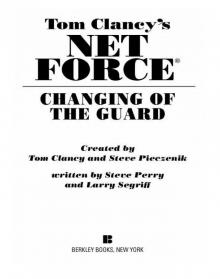 Changing of the Guard
Changing of the Guard Clear and Present Danger
Clear and Present Danger Hounds of Rome
Hounds of Rome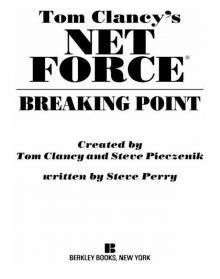 Breaking Point
Breaking Point Tom Clancy's Jack Ryan Books 7-12
Tom Clancy's Jack Ryan Books 7-12 Full Force and Effect
Full Force and Effect The Archimedes Effect
The Archimedes Effect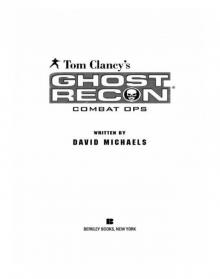 Combat Ops
Combat Ops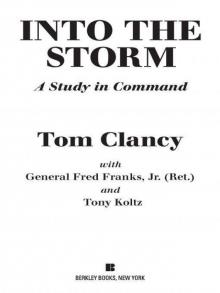 Into the Storm: On the Ground in Iraq
Into the Storm: On the Ground in Iraq Under Fire
Under Fire Point of Impact
Point of Impact Red Rabbit
Red Rabbit Rainbow Six
Rainbow Six The Hunt for Red October
The Hunt for Red October The Teeth of the Tiger
The Teeth of the Tiger Conviction (2009)
Conviction (2009)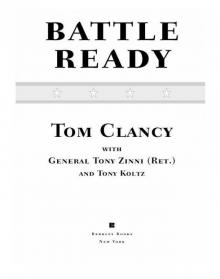 Battle Ready
Battle Ready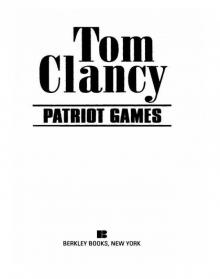 Patriot Games
Patriot Games The Sum of All Fears
The Sum of All Fears Fallout (2007)
Fallout (2007) Red Storm Rising
Red Storm Rising The Cardinal of the Kremlin
The Cardinal of the Kremlin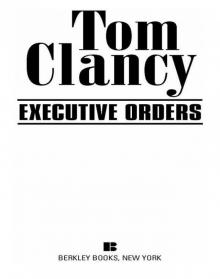 Executive Orders
Executive Orders Lincoln, the unknown
Lincoln, the unknown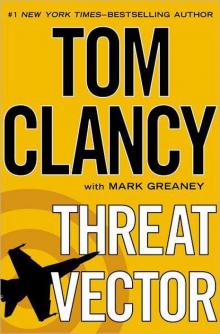 Threat Vector
Threat Vector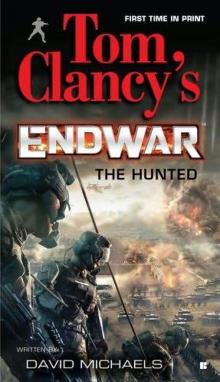 The Hunted
The Hunted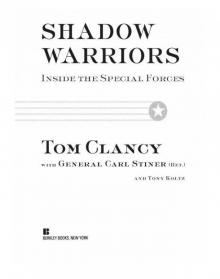 Shadow Warriors: Inside the Special Forces
Shadow Warriors: Inside the Special Forces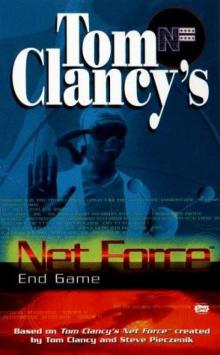 End Game
End Game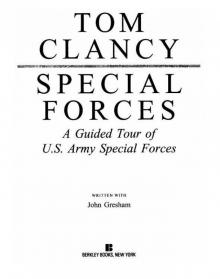 Special Forces: A Guided Tour of U.S. Army Special Forces
Special Forces: A Guided Tour of U.S. Army Special Forces Locked On
Locked On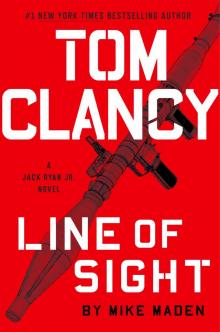 Line of Sight
Line of Sight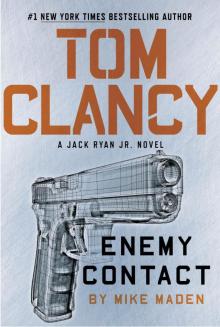 Tom Clancy Enemy Contact - Mike Maden
Tom Clancy Enemy Contact - Mike Maden Fighter Wing: A Guided Tour of an Air Force Combat Wing
Fighter Wing: A Guided Tour of an Air Force Combat Wing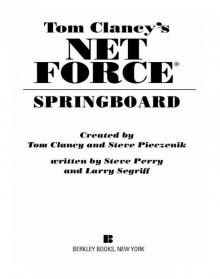 Springboard
Springboard Line of Sight - Mike Maden
Line of Sight - Mike Maden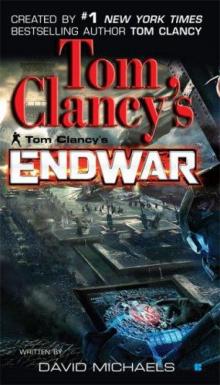 EndWar
EndWar Dead or Alive
Dead or Alive Tom Clancy Support and Defend
Tom Clancy Support and Defend Checkmate
Checkmate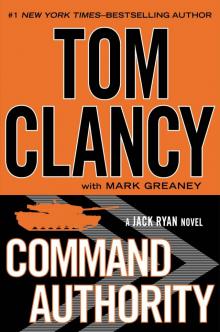 Command Authority
Command Authority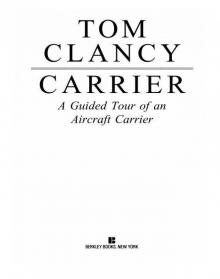 Carrier: A Guided Tour of an Aircraft Carrier
Carrier: A Guided Tour of an Aircraft Carrier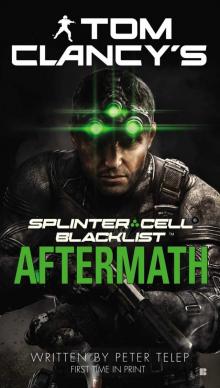 Blacklist Aftermath
Blacklist Aftermath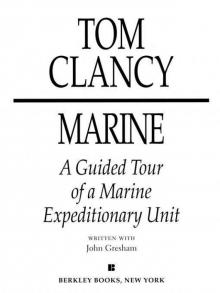 Marine: A Guided Tour of a Marine Expeditionary Unit
Marine: A Guided Tour of a Marine Expeditionary Unit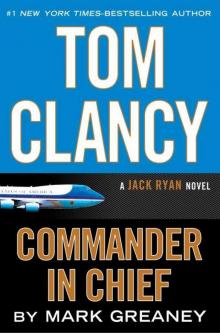 Commander-In-Chief
Commander-In-Chief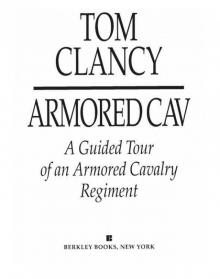 Armored Cav: A Guided Tour of an Armored Cavalry Regiment
Armored Cav: A Guided Tour of an Armored Cavalry Regiment Tom Clancy's Jack Ryan Books 1-6
Tom Clancy's Jack Ryan Books 1-6 The Ultimate Escape
The Ultimate Escape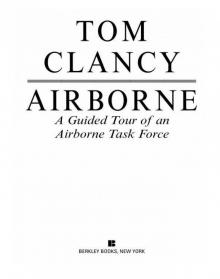 Airborne: A Guided Tour of an Airborne Task Force
Airborne: A Guided Tour of an Airborne Task Force Debt of Honor
Debt of Honor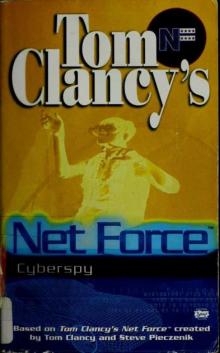 Cyberspy
Cyberspy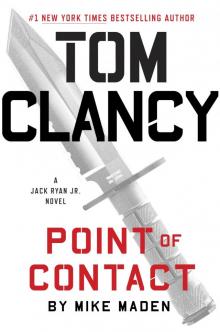 Point of Contact
Point of Contact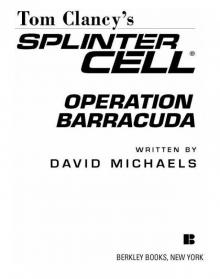 Operation Barracuda (2005)
Operation Barracuda (2005) Choke Point
Choke Point Power and Empire
Power and Empire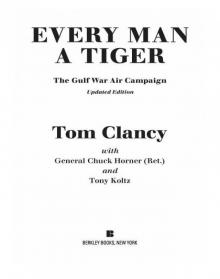 Every Man a Tiger: The Gulf War Air Campaign
Every Man a Tiger: The Gulf War Air Campaign Endgame (1998)
Endgame (1998)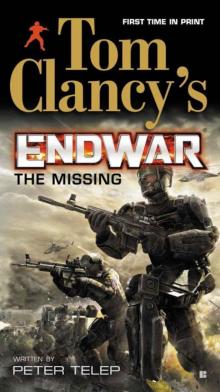 EndWar: The Missing
EndWar: The Missing Splinter Cell (2004)
Splinter Cell (2004)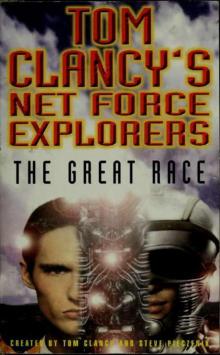 The Great Race
The Great Race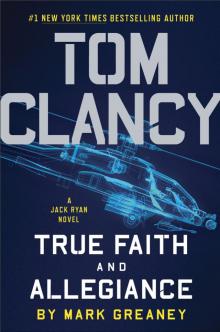 True Faith and Allegiance
True Faith and Allegiance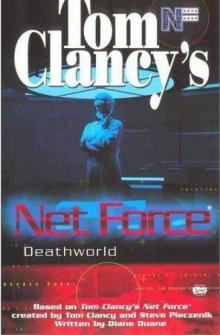 Deathworld
Deathworld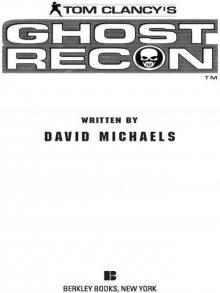 Ghost Recon (2008)
Ghost Recon (2008)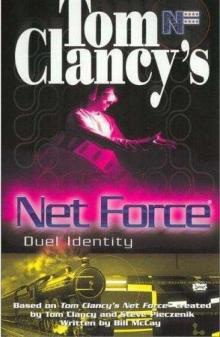 Duel Identity
Duel Identity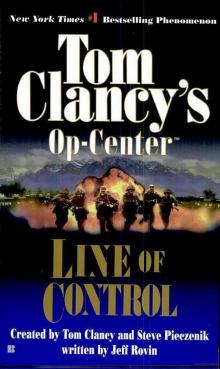 Line of Control o-8
Line of Control o-8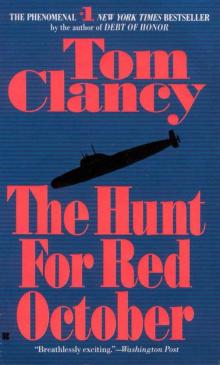 The Hunt for Red October jr-3
The Hunt for Red October jr-3 Hidden Agendas nf-2
Hidden Agendas nf-2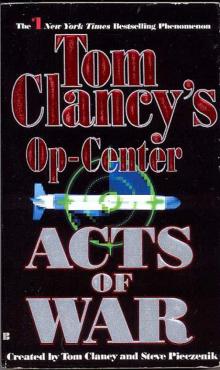 Acts of War oc-4
Acts of War oc-4 Ruthless.Com pp-2
Ruthless.Com pp-2 Night Moves
Night Moves The Hounds of Rome - Mystery of a Fugitive Priest
The Hounds of Rome - Mystery of a Fugitive Priest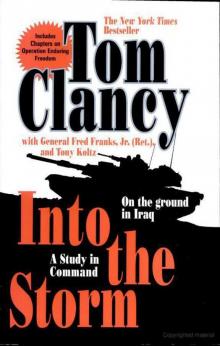 Into the Storm: On the Ground in Iraq sic-1
Into the Storm: On the Ground in Iraq sic-1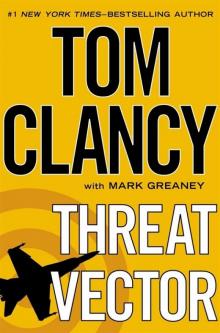 Threat Vector jrj-4
Threat Vector jrj-4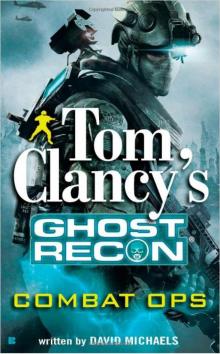 Combat Ops gr-2
Combat Ops gr-2 Virtual Vandals nfe-1
Virtual Vandals nfe-1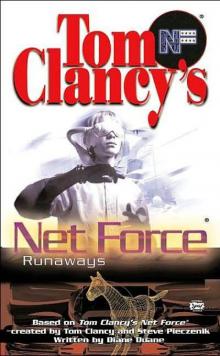 Runaways nfe-16
Runaways nfe-16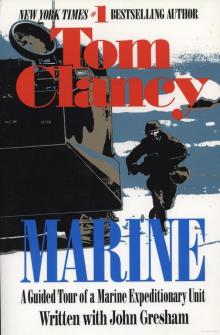 Marine: A Guided Tour of a Marine Expeditionary Unit tcml-4
Marine: A Guided Tour of a Marine Expeditionary Unit tcml-4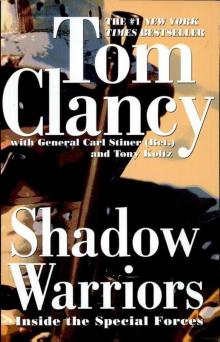 Shadow Warriors: Inside the Special Forces sic-3
Shadow Warriors: Inside the Special Forces sic-3 Jack Ryan Books 1-6
Jack Ryan Books 1-6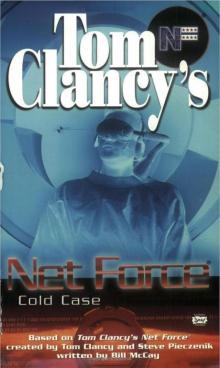 Cold Case nfe-15
Cold Case nfe-15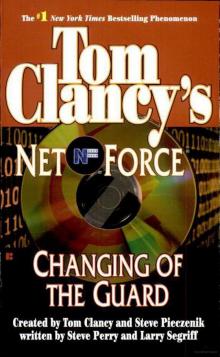 Changing of the Guard nf-8
Changing of the Guard nf-8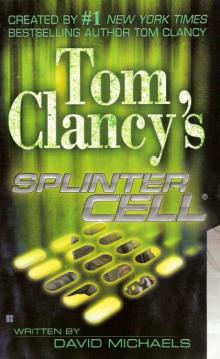 Splinter Cell sc-1
Splinter Cell sc-1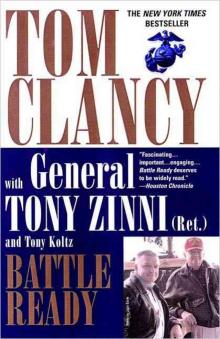 Battle Ready sic-4
Battle Ready sic-4 The Bear and the Dragon jrao-11
The Bear and the Dragon jrao-11 Fighter Wing: A Guided Tour of an Air Force Combat Wing tcml-3
Fighter Wing: A Guided Tour of an Air Force Combat Wing tcml-3 Patriot Games jr-1
Patriot Games jr-1 Jack Ryan Books 7-12
Jack Ryan Books 7-12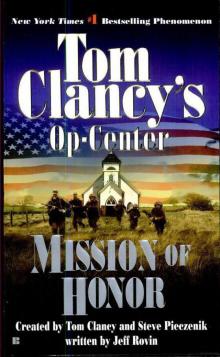 Mission of Honor o-9
Mission of Honor o-9 Private Lives nfe-9
Private Lives nfe-9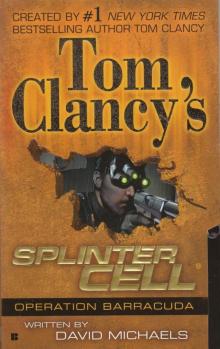 Operation Barracuda sc-2
Operation Barracuda sc-2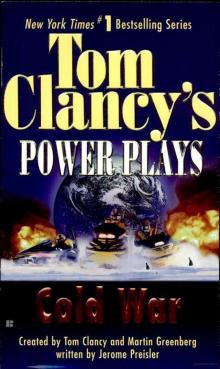 Cold War pp-5
Cold War pp-5 Point of Impact nf-5
Point of Impact nf-5 Red Rabbit jr-9
Red Rabbit jr-9 The Deadliest Game nfe-2
The Deadliest Game nfe-2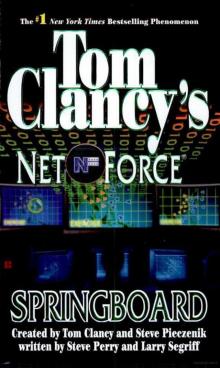 Springboard nf-9
Springboard nf-9 Safe House nfe-10
Safe House nfe-10 EndWar e-1
EndWar e-1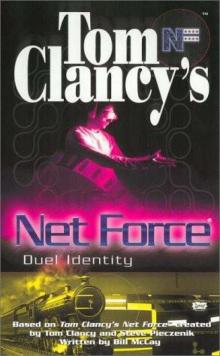 Duel Identity nfe-12
Duel Identity nfe-12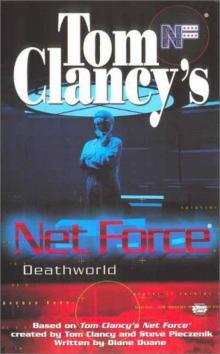 Deathworld nfe-13
Deathworld nfe-13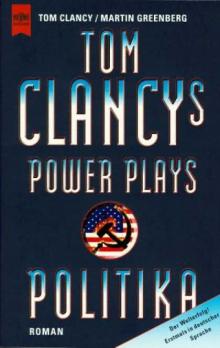 Politika pp-1
Politika pp-1 Rainbow Six jr-9
Rainbow Six jr-9 Tom Clancy's Power Plays 1 - 4
Tom Clancy's Power Plays 1 - 4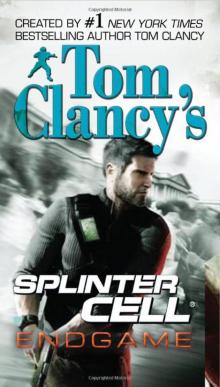 Endgame sc-6
Endgame sc-6 Executive Orders jr-7
Executive Orders jr-7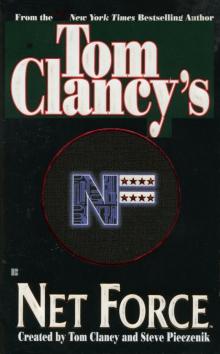 Net Force nf-1
Net Force nf-1 Call to Treason o-11
Call to Treason o-11 Locked On jrj-3
Locked On jrj-3 Against All Enemies
Against All Enemies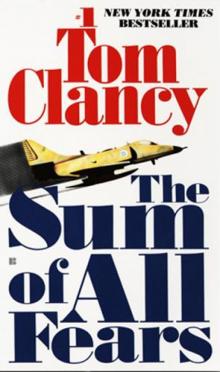 The Sum of All Fears jr-7
The Sum of All Fears jr-7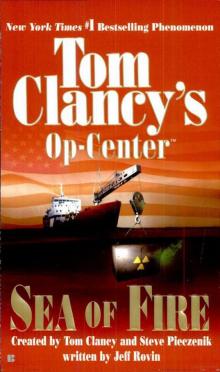 Sea of Fire o-10
Sea of Fire o-10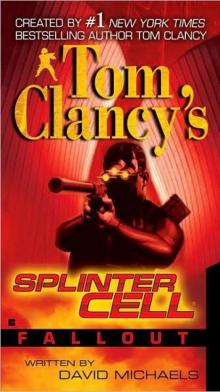 Fallout sc-4
Fallout sc-4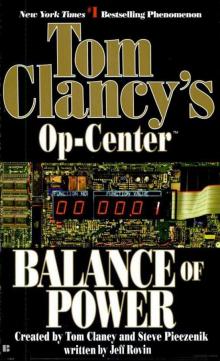 Balance of Power o-5
Balance of Power o-5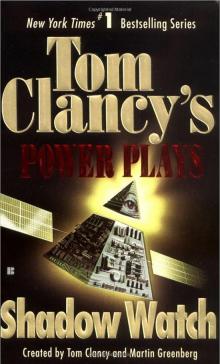 Shadow Watch pp-3
Shadow Watch pp-3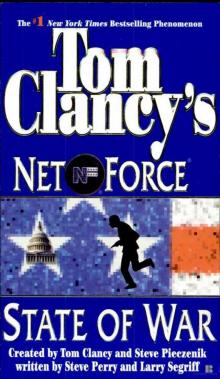 State of War nf-7
State of War nf-7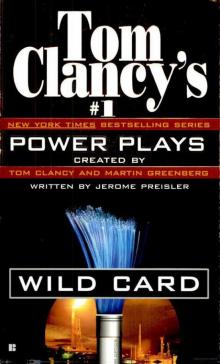 Wild Card pp-8
Wild Card pp-8 Games of State o-3
Games of State o-3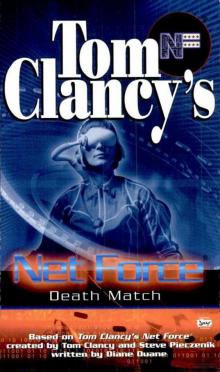 Death Match nfe-18
Death Match nfe-18 Against All Enemies mm-1
Against All Enemies mm-1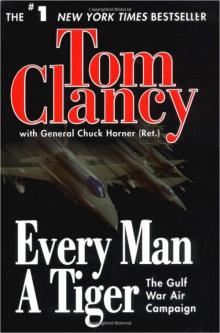 Every Man a Tiger: The Gulf War Air Campaign sic-2
Every Man a Tiger: The Gulf War Air Campaign sic-2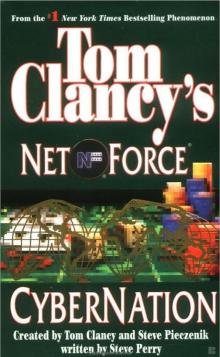 Cybernation nf-6
Cybernation nf-6 Support and Defend
Support and Defend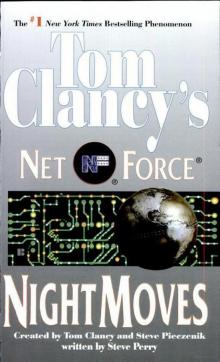 Night Moves nf-3
Night Moves nf-3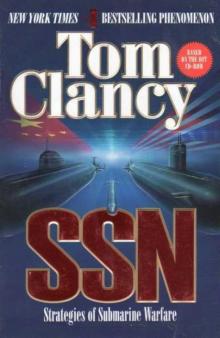 SSN
SSN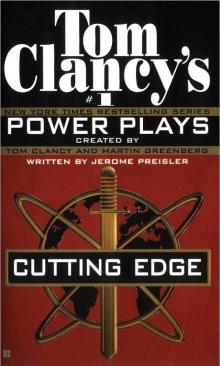 Cutting Edge pp-6
Cutting Edge pp-6 The Cardinal of the Kremlin jrao-5
The Cardinal of the Kremlin jrao-5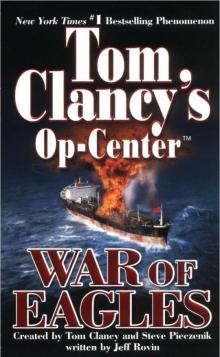 War of Eagles o-12
War of Eagles o-12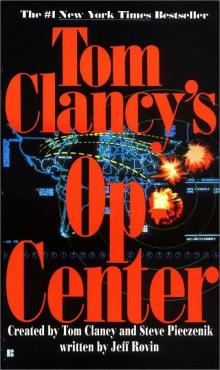 Op-Center o-1
Op-Center o-1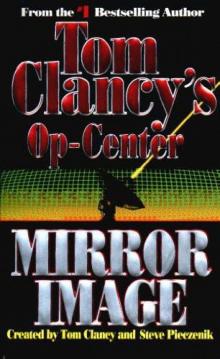 Mirror Image o-2
Mirror Image o-2 The Archimedes Effect nf-10
The Archimedes Effect nf-10 Teeth of the Tiger jrj-1
Teeth of the Tiger jrj-1 Bio-Strike pp-4
Bio-Strike pp-4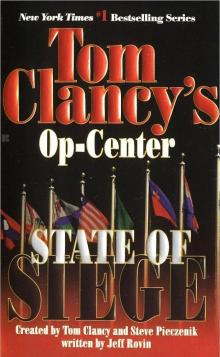 State of Siege o-6
State of Siege o-6 Debt of Honor jr-6
Debt of Honor jr-6 Zero Hour pp-7
Zero Hour pp-7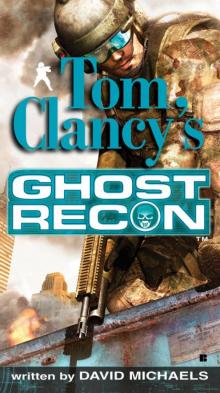 Ghost Recon gr-1
Ghost Recon gr-1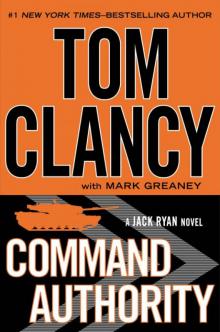 Command Authority jr-10
Command Authority jr-10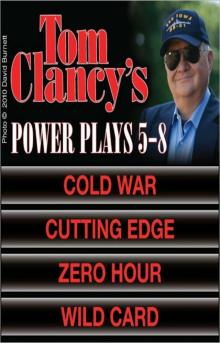 Tom Clancy's Power Plays 5 - 8
Tom Clancy's Power Plays 5 - 8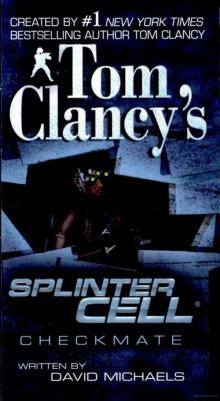 Checkmate sc-3
Checkmate sc-3 Breaking Point nf-4
Breaking Point nf-4 Gameprey nfe-11
Gameprey nfe-11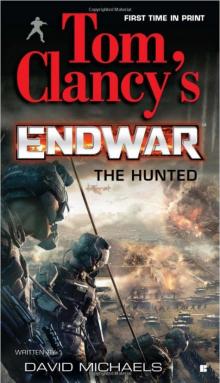 The Hunted e-2
The Hunted e-2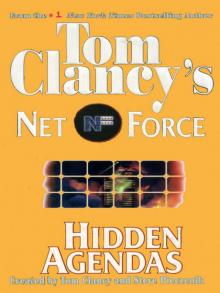 Hidden Agendas
Hidden Agendas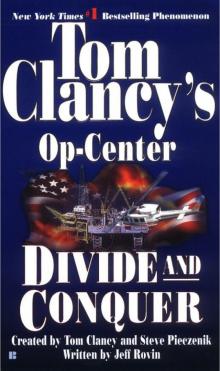 Divide and Conquer o-7
Divide and Conquer o-7